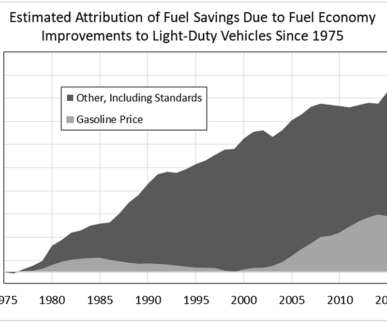Study estimates fuel economy improvements to US light-duty vehicles from 1975–2018 saved 2T gallons of fuel, 17B tons of CO2
Green Car Congress
MAY 3, 2020
They further estimated that roughly one-fifth of the savings can be attributed to gasoline price increases over the period and four-fifths to fuel economy and greenhouse gas (GHG) standards. Estimated attribution of fuel savings due to fuel economy improvements to light-duty vehicles since 1975. Greene et al. has almost doubled.
















Let's personalize your content